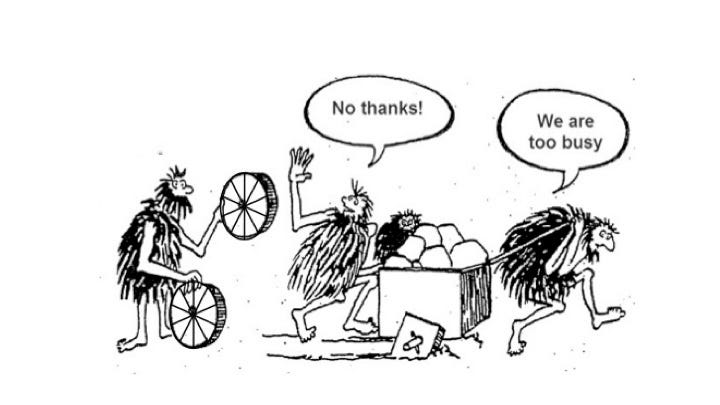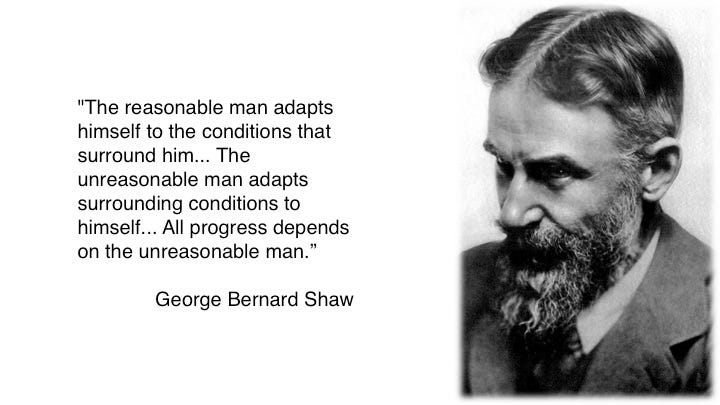
In the tale of “The Little Red Hen”, the little red hen finds a grain of wheat and asks for help from the other farmyard animals, but they are all too busy.
At each stage of harvest, milling the wheat into flour, and baking the flour into bread, the hen again asks for help from the other animals, but again she doesn’t receive any help.
Finally, the hen has completed her task and asks who will help her eat the bread. This time, all the animals eagerly volunteer but stating that no one helped her with her work, she eats the bread herself, leaving none for anyone else.
The moral of this story is that those who make no contribution to producing a product do not deserve to enjoy the product: “if any would not work, neither should he or she eat.”
Little Red Hen Syndrome
While the Hen is the hero of the fairytale, most changemakers in organisations are seldom the hero. The person who does the grunt work in the corporate environment seldom receives the praise.
In reality, often the only way to get an idea executed is to make it someone else’s idea. This is a reality that most intrapraneurs must accept, your job is to make your superiors and the organisation look good. If good leadership is in place leaders will recognise this. However, if you are expecting praise and recognition this is not the job for you.
“Ideas without implementation are worse than implementation without ideas.”
Selling your Ideas and Getting Buy-In
On this week’s Innovation Show, we speak to the world-renowned expert on managing up and selling ideas Jim Detert. Through decades of research, Jim and his colleagues have identified a framework through which the odds of idea acceptance increase dramatically.
Jim calls the idea proposer, “the issue seller”. The issue seller needs to employ a series of tactics to ensure their idea takes flight.
We are all in Sales
“I have never worked a day in my life without selling. If I believe in something, I sell it, and I sell it hard.” — Estée Lauder
The art of sales has a dirty reputation, but the reality is we are always selling. I find children amazing salespeople, they use emotion, they negotiate and they are relentless to get the outcome they desire.
Carlo Pignataro, author of Sell with Style and previous guest on the Innovation Show tells us of different types of buyers and that it is the salesperson who must understand the personality types of such buyers.
Some buyers react well to a burning platform sale, “if we don’t do this then we will suffer loss!” Other buyers react better to positive outcomes like “if we do this, then we will see an uplift in sales.”
The issue seller must approach the sale as a holistic sale, they must cater for every eventuality to get buy-in for their idea.
Tailoring the Pitch
The onus is always on the issue seller to ensure they position their idea correctly. The issue seller needs to walk a mile in the shoes of the issue buyer. It must be remembered that the person who is buying the idea has very little time for any ideas that are not on the existing company execution plan.
Frame the issue
An idea must be framed within the context of the corporate strategy if indeed there is one. In absence of a strategy, an issue seller can sell their idea alongside an existing initiative. Providing evidence that the idea will help achieve an existing corporate goal makes idea acceptance much more likely.
For example, if the issue seller believes the company needs a new website or CRM, then the issue seller should align the initiative with the corporate goal of let’s say increased profitability or sales optimisation. The issue seller must do projections to demonstrate how a new website will lead to more inbound sales or an increase in net promoter score. For a CRM, the issue seller needs to cite figures showing revenue from repeat, happy customers v the cost of new business generation.
Timing
It is so tempting for a corporate innovator to present their idea in a forum where they can ensure everyone hears their idea and thus they get credit for the idea. The problem is that the idea will be stillborn. There is so much work already on everyone’s plate, that no-one wants more work, even if they may benefit greatly. The timing and context in which you present the idea are paramount.

To really prepare the soil for an idea to germinate, the issue seller needs to prep every ally they can so that anybody whom the idea buyer (boss, CEO, MD) asks is on your side, you have already prepped them. Equally important is that the idea seller ensures the naysayers are either appeased somewhat or out of sight the idea buyer when the idea is presented.
Proactive Listening
An ideal way to ensure you are listened to is to meet your superior, a buyer of ideas and ask what is important to them. This sounds simple, but so very few people ever do this, asking your boss such questions will set you apart from the rest and increase the odds of the boss giving you adequate face time when you need to present your idea. Remember the boss hears ideas all the time. You have to position yourself as someone who gets the bigger picture and your ideas are aligned with that big picture.
Snipers not Scattergun
When it comes to volume of ideas. We are always better advised to carefully plan the selling of one what I call domino idea than a plethora of smaller ones. A domino idea — as the name suggests — triggers a raft of further favourable ideas. Just like dominos, the better the ideas are laid out, the more succesful the domino effect.
This domino idea must be meticulously planned, just like the sniper who carefully plans one shot rather than a scattergun approach of shooting out lots of ideas with the hope that one will hit.
Chicken Littles

It is quite common for the maverick, innovator or intrapreneur to speak up when they believe a corporate decision is wrong. It is quite common for this person to put their neck on the line to call out when something is not right. However, it is also common for the changemaker to be labelled as the dissenting voice, the chicken little or the Nostradamus, always predicting the end is nigh. This is a terrible label to be hampered with as your ideas will be even harder to sell.
Unfortunately, all too often many corporate mavericks leave after only a short period of time out of sheer frustration or a decision to drink the koolade and accept that change is futile.
While the innovator needs to do their homework to sell an idea, the leader (CEO, MD) needs to create the environment where people can feel psychologically safe to voice their opinions.
In this business environment of mass disruption, ideas are a valuable currency. Leaders must always remember that you do not build a business, you build the people who build the business.
“New ideas pass through three periods: 1) It can’t be done; 2) It probably can be done, but it’s not worth doing; 3) I knew it was a good idea all along!” — Arthur C. Clarke
THANKS FOR READING, PLEASE HIT A THUMB SO OTHERS WILL SEE THIS.
Part One of this blog is below:
On this week’s innovation show EP 65: “Selling Ideas to Your Boss and Getting Buy-In”, we talk about how to get the organisation to buy into new ideas.
Jim Detert is a Global expert in this field. Organizations do not prosper unless middle managers have the confidence to identify and champion change. Getting buy-in is key.
Jim identifies the problems faced by so many corporate innovators, intrapreneurs and entrepreneurs in residence.
He then discusses his frameworks on how to circumnavigate so many blockers to enable much-needed change and innovation.
We also discuss how leaders can create the conditions for such recommendations to be made from simple changes in where ideation happens to how they mingle with their teams.
You can read more on Jim’s work below:
https://hbr.org/2015/01/get-the-boss-to-buy-in
https://hbr.org/2016/01/can-your-employees-really-speak-freely
The show is broadcast on RTÉ Radio 1 extra 3 times weekly and is on iTunes, TuneIn Stitcher Player FM and Google play. The website is here and below is Soundcloud.